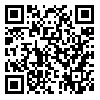BibTeX | RIS | EndNote | Medlars | ProCite | Reference Manager | RefWorks
Send citation to:
URL: http://jdisabilstud.org/article-1-2904-en.html
2- Assistant Professor, Department of Psychology, Central Tehran Branch, Islamic Azad University, Tehran, Iran
3- Associate Professor, Department of Psychology, Central Tehran Branch, Islamic Azad University, Tehran, Iran
Abstract
Background & Objectives: Social adjustment is about an individual's ability to display competent social behavior and adapt to their immediate social setting. Metacognition refers to an individual's beliefs about their cognition and involves monitoring, controlling, and interpreting their thoughts. A thinking style is a characteristic way of processing information, including how one obtains knowledge, organizes thoughts, and forms views and opinions. Commitment is the extent to which individuals adhere to and invest in identity–relevant choices. This study aimed to analyze the social adjustment of second–grade high school boys based on their metacognitive beliefs and thinking styles, focusing on commitment as a mediator. Data was analyzed using structural equation modeling.
Methods: The current study was analytical research, and correlative was based on structural equation modeling (SEM). The study population included all second–grade high school boys’ students in Robat Karim of Tehran province in the 2020–21 academic year. Due to the situation caused by the spread of the COVID-19 pandemic and its continuation, the questionnaires were distributed virtually and through a link in the class groups of selected students after obtaining various permits. A random multi–stage cluster sampling method was used to select the sample group. The sample size was 390 students who responded in the online form to the Adjustment Inventory for School Students (AISS) (Sinha & Singh, 1993), Function Dimension of Thinking Styles Inventory (Sternberg & Wagner, 1992), Meta–Cognitions Questionnaire–Adolescent (MCQ–A) (Cartwright–Hatton et al., 2004) and Identity dimension of Identity Style Inventory (ISI) (Brzonsky, 1992). In order to analyze the collected data, SPSS version 24 software was used to check descriptive statistics and Pearson's correlation coefficient and AMOS version 24 was used for the structural equation model. The significance level was 0.05.
Results: Results showed that the direct effect of metacognitive beliefs on social adjustment was insignificant (β=–0.105, p=0.256). However, this relationship was significantly seen when the dimension of commitment in identity in identity was used as a mediator in the model (β=0.351, p=0.001). The direct effect of the three functions of thinking style on social adjustment was insignificant (β=0.110, p=0.285). However, three functions of thinking style had significant indirect effects on social adjustment when the dimension of commitment in identity was used as a mediator in the model (β=0.172, p=0.035). The estimated values for fit indices were RMSEA=0.030, CFI=0.96, IFI=0.91, NFI=0.96, GFI=0.96 and CMIN/df=1.91, which the model's fitness confirmed.
Conclusion: According to the results, boys' thinking styles, metacognitive beliefs, and commitment to identity play important roles in their social adjustment. The commitment to identity acts as a mediator in all these relationships.
| Rights and permissions | |
 |
This work is licensed under a Creative Commons Attribution-NonCommercial 4.0 International License. |



